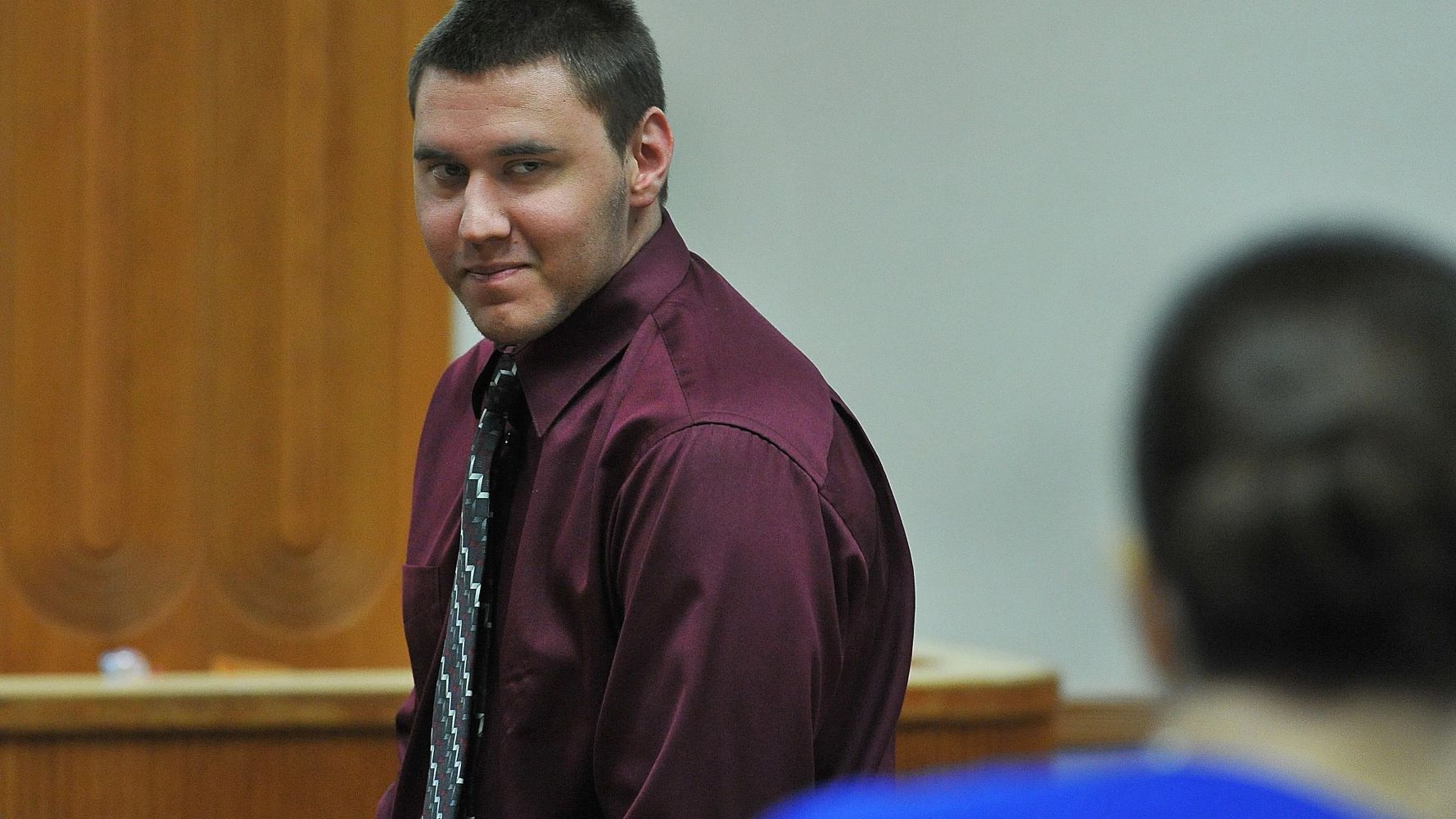
What drives a teenager to commit such a heinous act? Tyler Hadley, a 17-year-old from Port St. Lucie, Florida, shocked the nation in 2011 when he brutally murdered his parents, Blake and Mary-Jo Hadley, with a hammer. After the murders, he threw a house party while their bodies lay hidden in a bedroom. This tragic event has sparked intense discussions about mental health, substance abuse, and juvenile justice. Tyler's story is a chilling reminder of the complexities of human behavior and the devastating impact of untreated psychological issues. Dive into the details of his life, the crime, and its aftermath to understand the full scope of this harrowing case.
Key Takeaways:
- Tyler Hadley's troubled upbringing and descent into self-medication ultimately led to the tragic murder of his parents, shocking the community and leading to a landmark case in juvenile justice.
- Despite efforts at rehabilitation, Tyler's behavior in prison has complicated public perception, highlighting the complexities of the human psyche and the challenges of predicting future behavior.
Early Life and Family Background
Tyler Hadley's story begins in Port St. Lucie, Florida, where he was born into a seemingly normal family. However, his early years were marked by significant challenges.
- Tyler Hadley was born on December 16, 1993, in Port St. Lucie, Florida. He was premature and weighed just 3 pounds, 10 ounces at birth.
- Due to his premature birth, Tyler required a month-long stay in an incubator to stabilize his health.
- His family described him as loving but withdrawn, suffering from anxiety, depression, low self-esteem, and bulimia.
Parental Relationship
Tyler's parents, Blake and Mary-Jo Hadley, were well-respected members of their community. Their relationship with Tyler, however, was complex and fraught with difficulties.
- Blake Hadley worked as a watch engineer for 30 years at Florida Power & Light (FPL).
- Mary-Jo Hadley was an elementary school teacher for 24 years, spending her last six years at Village Green Environmental Studies School.
- Despite their professional success, Blake and Mary-Jo struggled to manage Tyler's behavioral and psychological issues.
Troubled Teenager
As Tyler grew older, his behavior became increasingly problematic, leading to numerous incidents that alarmed his family and community.
- By age 10, Tyler was being treated with various medications for conditions such as acne, depression, growth hormones, and a thyroid condition.
- From ages 11 to 13, Tyler engaged in activities like defacing public bathrooms, shoe-painting cars, breaking windows, stealing Christmas lights, and setting small fires.
Self-Medication
Tyler's attempts to cope with his issues led him down a dangerous path of self-medication, which only exacerbated his problems.
- Tyler began self-medicating at a young age, getting drunk by age 12.
- By age 15, he was smoking pot, and by age 16, he was taking pills such as Xanax, Percocet, and Oxycodone.
- Tyler also experimented with ecstasy and the hallucinogen DMT.
Murderous Thoughts
Tyler's mental state deteriorated to the point where he began having obsessive thoughts about killing his parents.
- Tyler's thoughts about killing his parents started as a minor obsession but increased in frequency and intensity over time.
- He told psychologist Robert Kinscherff that he planned to kill his parents and then back up the car into the garage to kill himself by carbon monoxide poisoning.
The Day of the Murders
The events of July 16, 2011, marked a turning point in Tyler's life and shocked the entire community.
- On the day of the murders, Tyler took his parents' phones to prevent them from calling for help.
- Around 5 p.m., he took some ecstasy, fearing he couldn't go through with his plan sober.
- Tyler found a 17-inch framing hammer in the garage and silently stood behind his mother before delivering 36 blows, mostly to her head and back.
- He then attacked his father head-on, striking him at least 39 times in the head and chest.
Cleaning Up the Crime Scene
After committing the murders, Tyler took steps to conceal his actions, though his efforts were ultimately futile.
- Tyler dragged his parents' bodies into their bedroom and attempted to clean up the crime scene.
- He tossed bloody towels and Clorox wipes onto the bed to hide the evidence.
Throwing the Party
In a shocking twist, Tyler decided to throw a house party while his parents' bodies lay hidden in the bedroom.
- Tyler used Facebook to invite about 30 friends to a party at his home, unaware that his parents' bodies were hidden in the bedroom.
- The party started shortly after sunset, and by midnight, more than 60 people had arrived.
Anonymous Tip and Arrest
The next day, an anonymous tip led police to the Hadley house, where they made a gruesome discovery.
- Michael Mandell, one of Tyler's friends, left an anonymous tip with Crime Stoppers at 4:24 a.m.
- Police rushed to the Hadley house and found the party still going on.
- Despite Tyler's claims that his parents were out of town, police made an emergency entrance and discovered the bodies.
Police Investigation
The investigation revealed the full extent of Tyler's actions and the horrifying scene inside the house.
- When police forced open the bedroom door, they found dining chairs and a coffee table tossed on the bed.
- Under the furniture, they discovered Blake Hadley's body, and nearby, Mary-Jo's body.
- The room was littered with beer bottles, unrolled cigars, and furniture tossed around. Dried blood was found on the walls.
Charges and Sentencing
Tyler faced the consequences of his actions in court, leading to a landmark case in juvenile justice.
- Tyler was arrested for murder and later sentenced to life in prison without parole on March 21, 2014.
- His case was notable because it was one of the first juvenile killers to be sentenced under the U.S. Supreme Court's 2012 ruling in Miller v. Alabama, which barred automatic mandatory life prison terms for minors.
Resentencing Hearing
In 2018, Tyler faced a resentencing hearing that could have resulted in a reduced sentence.
- The hearing began on October 1, 2018, and could have resulted in a reduced sentence of at least 40 years.
- Public Defender Diamond Litty called witnesses including child behavior experts and psychologists specializing in adolescent drug use and brain development.
Psychological Evaluation
Experts weighed in on Tyler's mental state and potential for rehabilitation.
- Behavior psychologist Robert Kinscherff testified that Tyler showed the ability to be rehabilitated over time.
- Kinscherff believed that rehabilitation could potentially lead to release from prison, though he acknowledged that predicting Tyler's future behavior was uncertain.
Incarceration Behavior
Tyler's behavior in prison further complicated his case and public perception.
- During his time in Okeechobee Correctional Institution, Tyler was not well-behaved. He smoked pot, was caught with makeshift shivs, and refused to participate in disciplinary hearings.
- Fellow inmates nicknamed him "Ham," "Hammer," and "Hambo" due to his choice of murder weapon.
The Aftermath of Tyler Hadley's Actions
Tyler Hadley's story is a chilling reminder of the dark side of human nature. His brutal actions on July 16, 2011, left a permanent scar on his community and family. Despite his troubled past and mental health issues, the severity of his crime shocked everyone. The legal battles, psychological evaluations, and media coverage that followed highlighted the complexities of juvenile justice and mental health. Hadley's case continues to be a topic of discussion, raising questions about rehabilitation and the impact of untreated psychological problems. His life sentence without parole underscores the gravity of his actions, serving as a cautionary tale for others. The demolition of the Hadley house in 2015 symbolized the community's desire to move past this tragic chapter. Tyler Hadley's actions will forever be a stark reminder of the importance of addressing mental health and substance abuse issues early on.
Frequently Asked Questions
Was this page helpful?
Our commitment to delivering trustworthy and engaging content is at the heart of what we do. Each fact on our site is contributed by real users like you, bringing a wealth of diverse insights and information. To ensure the highest standards of accuracy and reliability, our dedicated editors meticulously review each submission. This process guarantees that the facts we share are not only fascinating but also credible. Trust in our commitment to quality and authenticity as you explore and learn with us.


